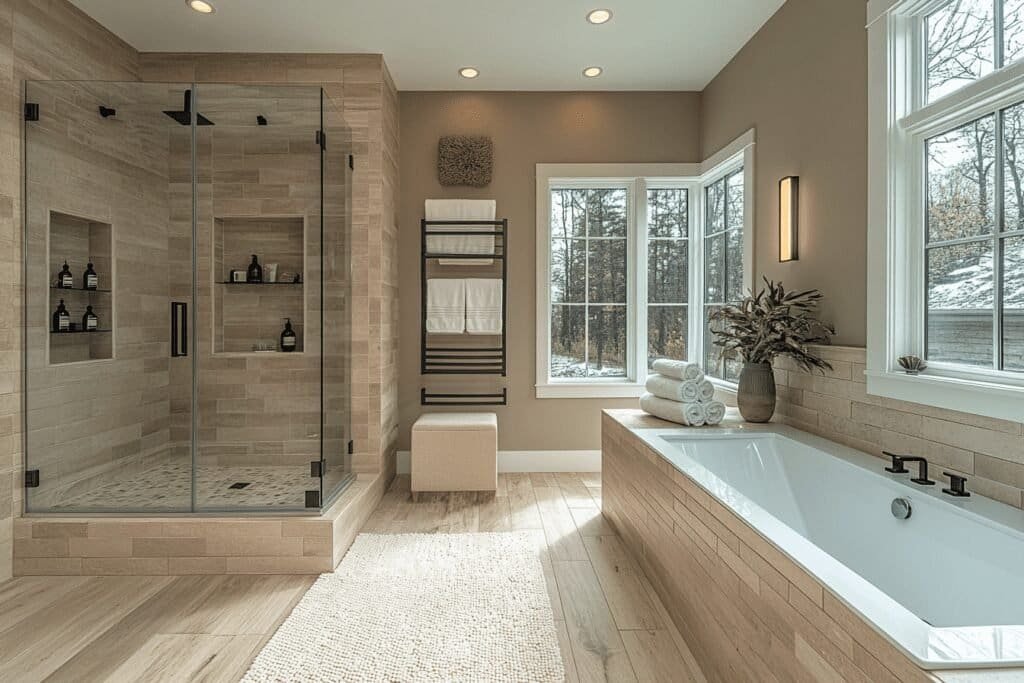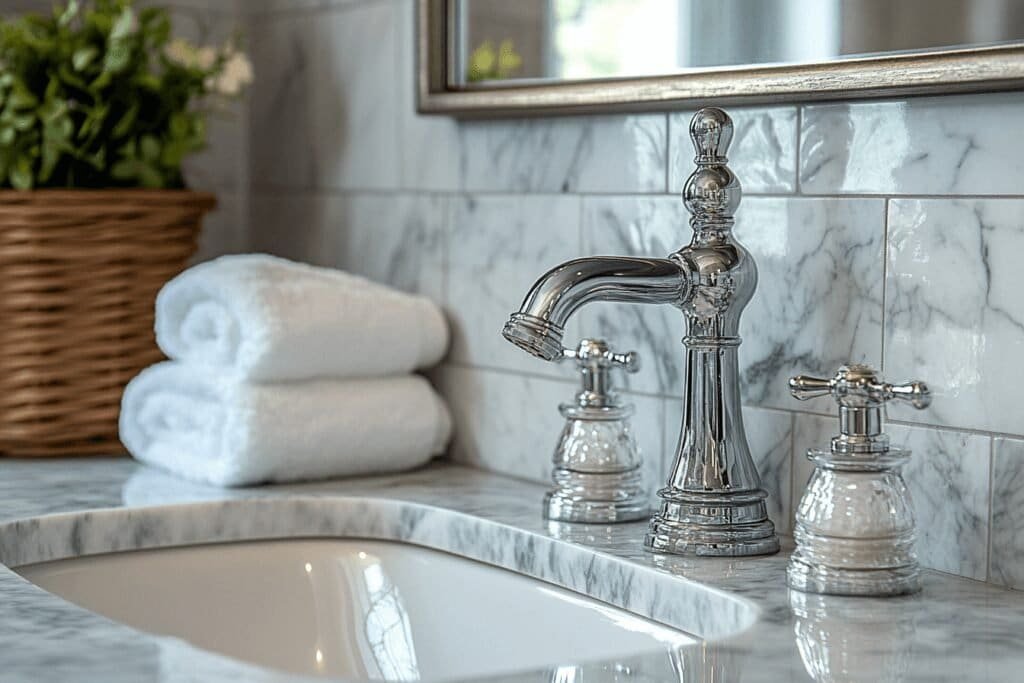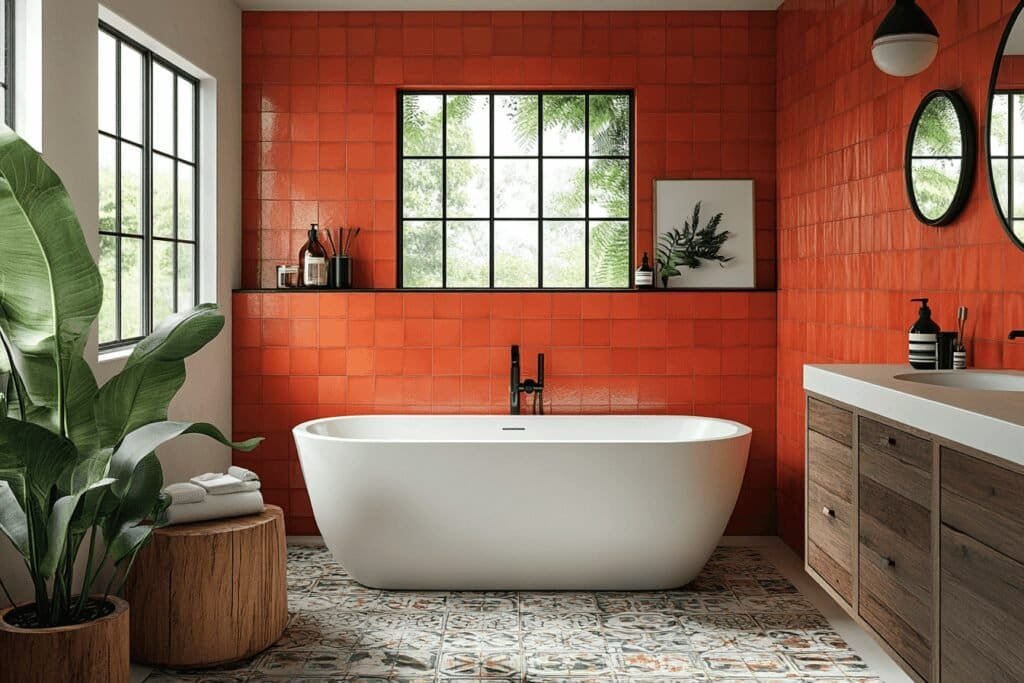When designing or remodeling a bathroom, particularly one with a walk-in shower, proper shower floor drainage is crucial to ensure both functionality and longevity. Poor drainage can lead to standing water, which not only affects your shower experience but can also cause long-term damage to your bathroom. This guide will walk you through the essentials of shower floor drainage, the different types of drains available, how to properly install and maintain them, and expert advice on keeping your shower running smoothly.
Why Proper Shower Floor Drainage Is Crucial
In any bathroom, but especially in walk-in showers, good drainage is vital. A well-designed drainage system prevents water from pooling and reduces the risk of water damage. Additionally, it helps avoid the buildup of mold and mildew, which can develop in moist, poorly ventilated areas. A well-functioning drain can also make cleaning your bathroom easier and faster, as water flows away efficiently rather than stagnating.
Poor drainage could lead to water seeping into other areas of the bathroom or even into adjacent rooms, which is particularly concerning during a bathroom remodel where waterproofing might not yet be fully in place.
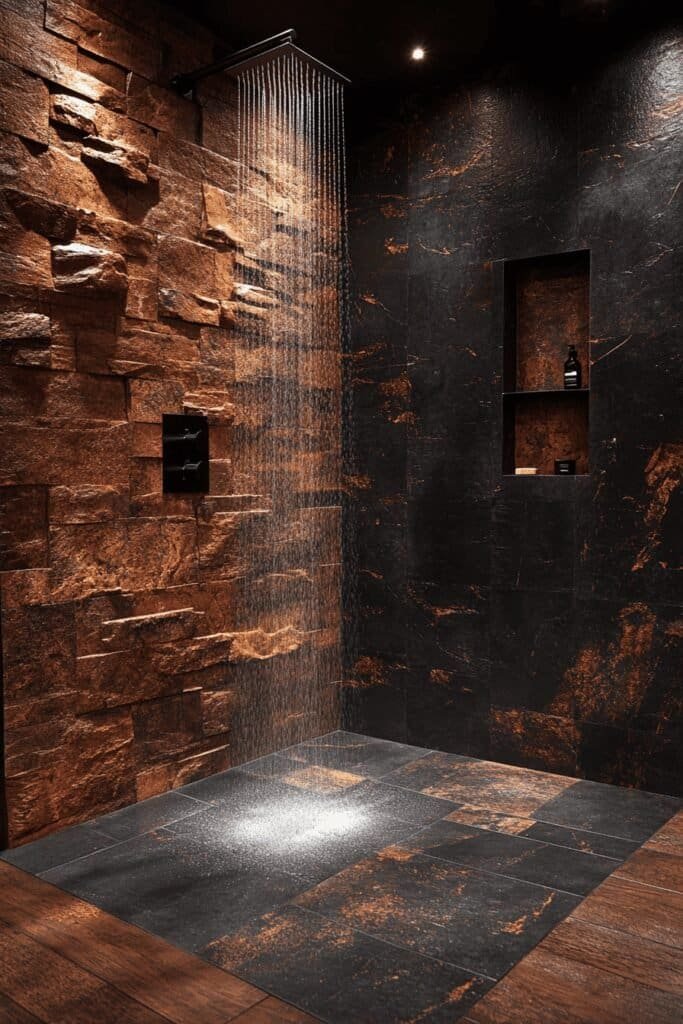

Key Types of Shower Drains for Walk-In Showers
When choosing the right drain for your walk-in shower, there are several types to consider:
- Linear Drains: These drains run in a straight line and are usually placed at one end of the shower. They offer a modern, minimalist look and provide excellent water flow. Linear drains are ideal for larger showers because they can handle more water and can be seamlessly integrated into various shower floor designs.
- Point (Center) Drains: The most common type of drain, point drains are usually located in the center of the shower floor. This type of drain works best with traditional sloped floors, where water naturally flows toward the center.
- Tile-In Drains: These drains are designed to blend in with your shower tile, making them nearly invisible. Tile-in drains are perfect for homeowners who want a seamless, minimalist appearance. They also come in both linear and center drain styles.
Each drain type serves a different purpose, so choosing the right one depends on the design and layout of your walk-in shower.
Choosing the Right Drain Type for Your Walk-In Shower
Selecting the correct drain for your walk-in shower comes down to both function and aesthetics. Consider the following:
- Shower Size: For larger showers, a linear drain might be more effective as it can handle greater water flow. Smaller showers can make use of point drains, which are simpler and easier to install.
- Bathroom Design: If you’re aiming for a sleek, modern look, a tile-in drain could be the best choice, as it blends into the floor design. On the other hand, if you prefer a more traditional aesthetic, a simple center drain can work just as well.
- Drain Placement: Drain placement matters for water flow efficiency. In a walk-in shower, placing the drain near the entry point can minimize water spreading across the entire bathroom floor.
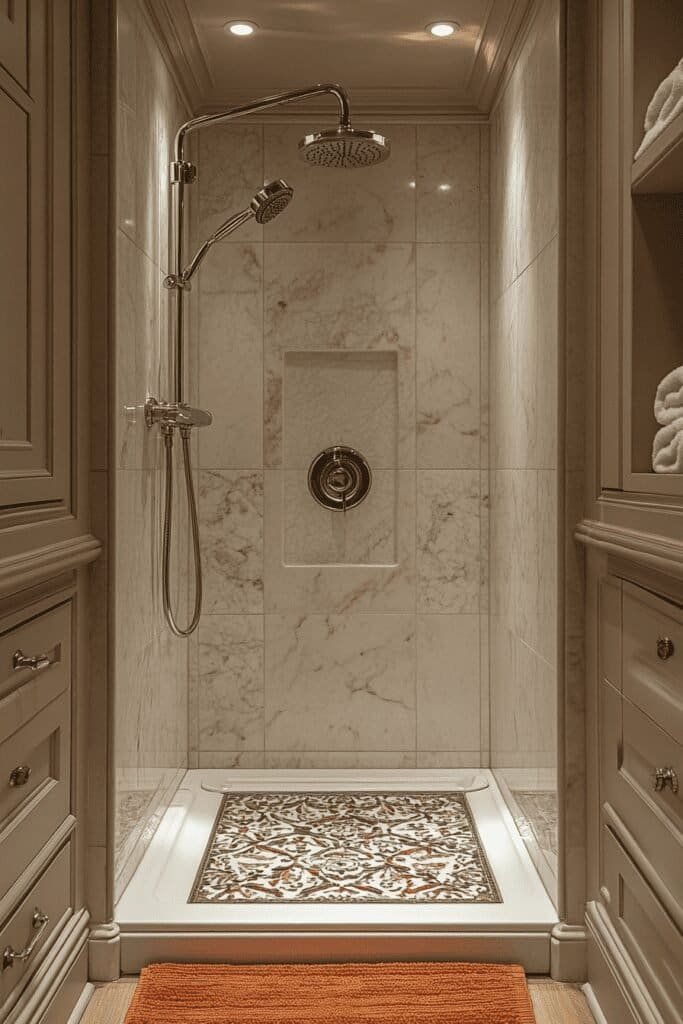

Sloping the Shower Floor for Optimal Drainage
A proper slope is essential for effective drainage. According to industry standards, the floor should slope at least 1/4 inch per foot towards the drain. This slope ensures that water flows smoothly and efficiently into the drain without pooling.
Expert Opinion: “When installing a walk-in shower, one of the most critical elements is ensuring the proper slope for drainage. Even the slightest miscalculation can cause water to stagnate, leading to mold or water damage,” advises professional plumber Mike Holmes. It’s best to have a professional handle the floor slope to prevent future issues.
Linear Drains vs. Center Drains: Which Is Better?
Both linear and center drains are effective, but they come with their pros and cons:
- Linear Drains: These provide a sleek, modern look and are perfect for larger or oddly shaped showers. They can be placed along one edge, allowing for a more open shower design without disrupting the flow of the room. They also work well in bathroom remodels where the shower needs to handle high water flow. However, they are generally more expensive than traditional drains.
- Center Drains: A tried-and-true option, center drains are cheaper and easier to install. The floor around the drain slopes towards the center, so the tiling may look more complex than with a linear drain. Center drains are ideal for smaller bathrooms and walk-in showers that don’t need extensive water flow control.
Materials and Finishes for Shower Drains
The material and finish of your shower drain should complement your overall bathroom design. Common materials include:
- Stainless Steel: Durable, rust-resistant, and easy to clean, stainless steel is a popular choice for all drain types.
- Brass: This material adds a classic, elegant touch but may require more maintenance to prevent tarnishing.
- Tile-in Options: These allow you to integrate your drain into your shower floor tile seamlessly, providing a minimalist look.
Choose a finish that matches your other bathroom fixtures for a cohesive design.
Maintenance Tips for Shower Floor Drainage Systems
Maintaining your shower drain is essential to preventing clogs and ensuring smooth water flow. Regular cleaning will help prevent hair, soap scum, and debris from building up and causing blockages.
Expert Quote: “Regular maintenance is crucial for keeping your drain functioning efficiently, especially in areas with hard water. Clean your drain monthly to avoid buildup,” suggests plumber Mark Jensen.
Simple tips include:
- Installing a drain guard to catch hair and prevent clogs.
- Cleaning the drain and trap regularly to avoid slow drainage.
- Using mild cleaners to break down soap scum and prevent mineral deposits.
Addressing Common Drainage Issues in Walk-In Showers
Some common issues that arise with shower drainage include:
- Standing water: This can happen if the floor isn’t properly sloped or if the drain is clogged.
- Slow drainage: Often caused by clogs from hair or soap buildup. Regular maintenance and using drain cleaners can help.
- Unpleasant odors: If you notice smells coming from your shower drain, it may be time to clean out the P-trap, where water and debris can accumulate.
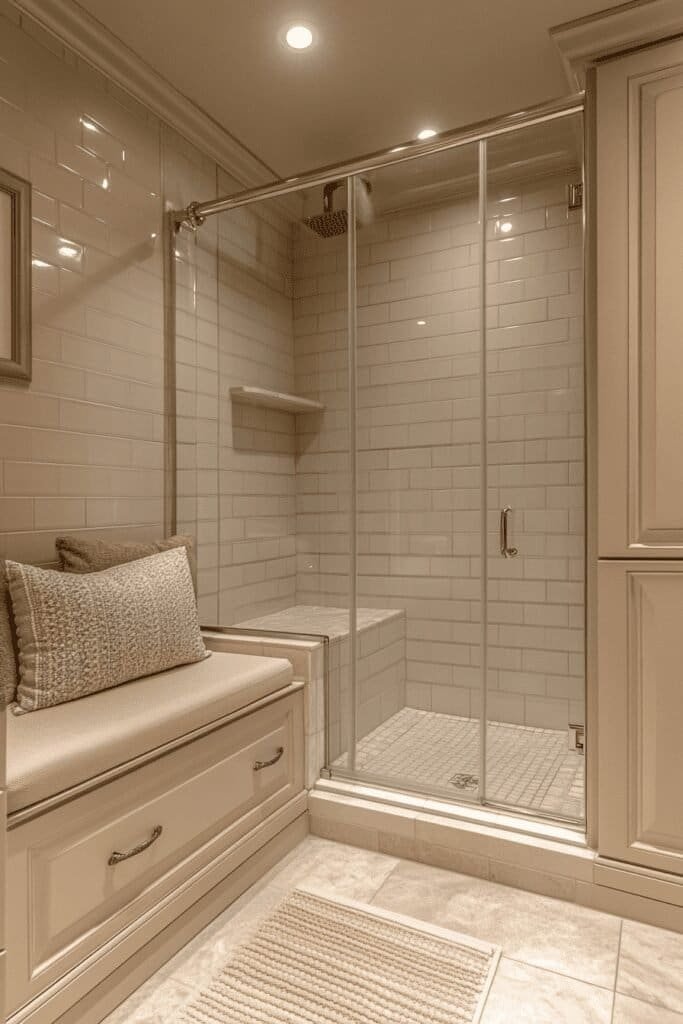

Shower Drainage and Bathroom Remodel Planning
When planning a bathroom remodel, it’s easy to focus on aesthetics, but proper drainage should be at the top of your priority list. The last thing you want is to invest in beautiful new tiles and fixtures only to discover that your shower floods because the drain can’t handle the water flow.
By incorporating the right drain type and placement into your design early on, you’ll prevent future problems and ensure a functional, enjoyable bathroom experience.
Installing a Shower Drain: DIY vs. Hiring a Professional
While installing a drain might seem straightforward, proper waterproofing and floor sloping are crucial to preventing future problems.
- DIY Installation: You can install a center drain yourself if you’re comfortable with basic plumbing tasks and tiling.
- Hiring a Professional: For more complex installations, such as linear drains or those involving custom tilework, it’s best to hire a professional. A professional will ensure proper floor sloping, waterproofing, and that the drain is correctly integrated into your shower.
Final Thoughts: The Importance of High-Quality Drainage in Walk-In Showers
Proper shower floor drainage is essential for creating a functional, durable, and aesthetically pleasing walk-in shower. By choosing the right drain, ensuring proper installation, and keeping up with regular maintenance, you can avoid the headaches of water pooling, leaks, and costly repairs. Whether you opt for a linear drain or a traditional center drain, prioritizing drainage in your bathroom remodel is key to a successful and stress-free shower experience.
Frequently Asked Questions (FAQs)
Q1: What is the best type of drain for a walk-in shower?
The best type depends on your shower size and design. Linear drains are ideal for larger, modern showers, while center drains work well in smaller showers with a more traditional layout.
Q2: How often should shower drains be cleaned?
Shower drains should be cleaned monthly to prevent buildup and clogs.
Q3: Can I install a linear drain in an existing shower?
Yes, but it may require significant adjustments to the flooring and tiling. It’s best done as part of a bathroom remodel.
Q4: What slope is required for shower drainage?
A slope of 1/4 inch per foot is standard for efficient drainage.
Q5: How do I prevent clogs in my shower drain?
Using a drain guard, regularly cleaning the drain, and clearing the P-trap can help prevent clogs.
Disclaimer: As an Amazon Associate, I earn from qualifying purchases. This means that if you click on certain links on this site and make a purchase, I may receive a small commission at no additional cost to you.
